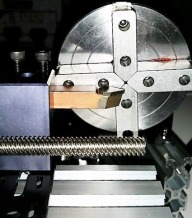Lathe 4" x 40"
Discussion in 'CNC Lathes' started by Johnnycatt, Sep 18, 2015.
Lathe 4" x 40"
Discussion in 'CNC Lathes' started by Johnnycatt, Sep 18, 2015.
This is a lathe. I do not plan on making parts for NASA, but I want to be able to turn, face and bore things like wood, brass, aluminum and plastics.
Page 1 of 2
Page 1 of 2

